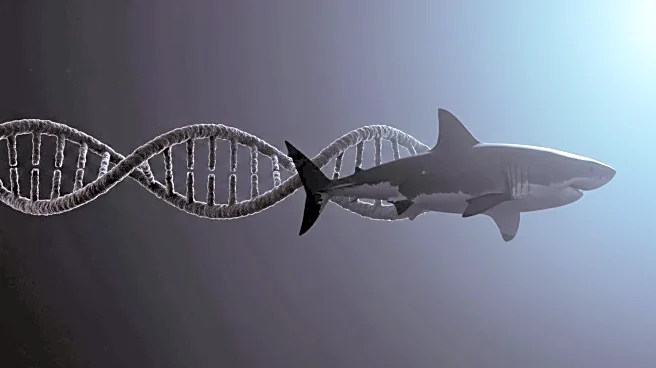What's Happening?
Recent studies have revealed unexpected genetic diversity among great white sharks, challenging existing evolutionary theories. Researchers have identified three distinct groups of great white sharks, each with unique mitochondrial DNA, despite sharing a common ancestor from 10,000 years ago. These groups are located in the north Pacific, southern Pacific and Indian Ocean, and the north Atlantic and Mediterranean. The study, led by Gavin Naylor from the Florida Museum of Natural History, found that traditional explanations such as female philopatry and genetic drift do not account for the observed genetic differences. The researchers suggest that an unknown evolutionary mechanism may be influencing the mitochondrial DNA variations.
Why It's Important?
This discovery has significant implications for conservation biology and evolutionary studies. Understanding the genetic diversity and population structure of great white sharks is crucial for developing effective conservation strategies. The findings challenge existing assumptions about shark migration and reproduction, potentially leading to new insights into their evolutionary history. The study also highlights the limitations of current genetic models and the need for further research to uncover the mechanisms driving these genetic differences. This could impact how scientists approach the study of other marine species with similar genetic mysteries.
What's Next?
Further research is needed to identify the evolutionary mechanisms responsible for the genetic diversity observed in great white sharks. Scientists may explore alternative hypotheses and conduct additional genetic analyses to uncover the factors influencing mitochondrial DNA variations. Conservationists may use these findings to reassess strategies for protecting shark populations, considering the distinct genetic groups identified. The study also opens avenues for investigating similar genetic phenomena in other marine species, potentially leading to broader insights into oceanic biodiversity and evolution.











